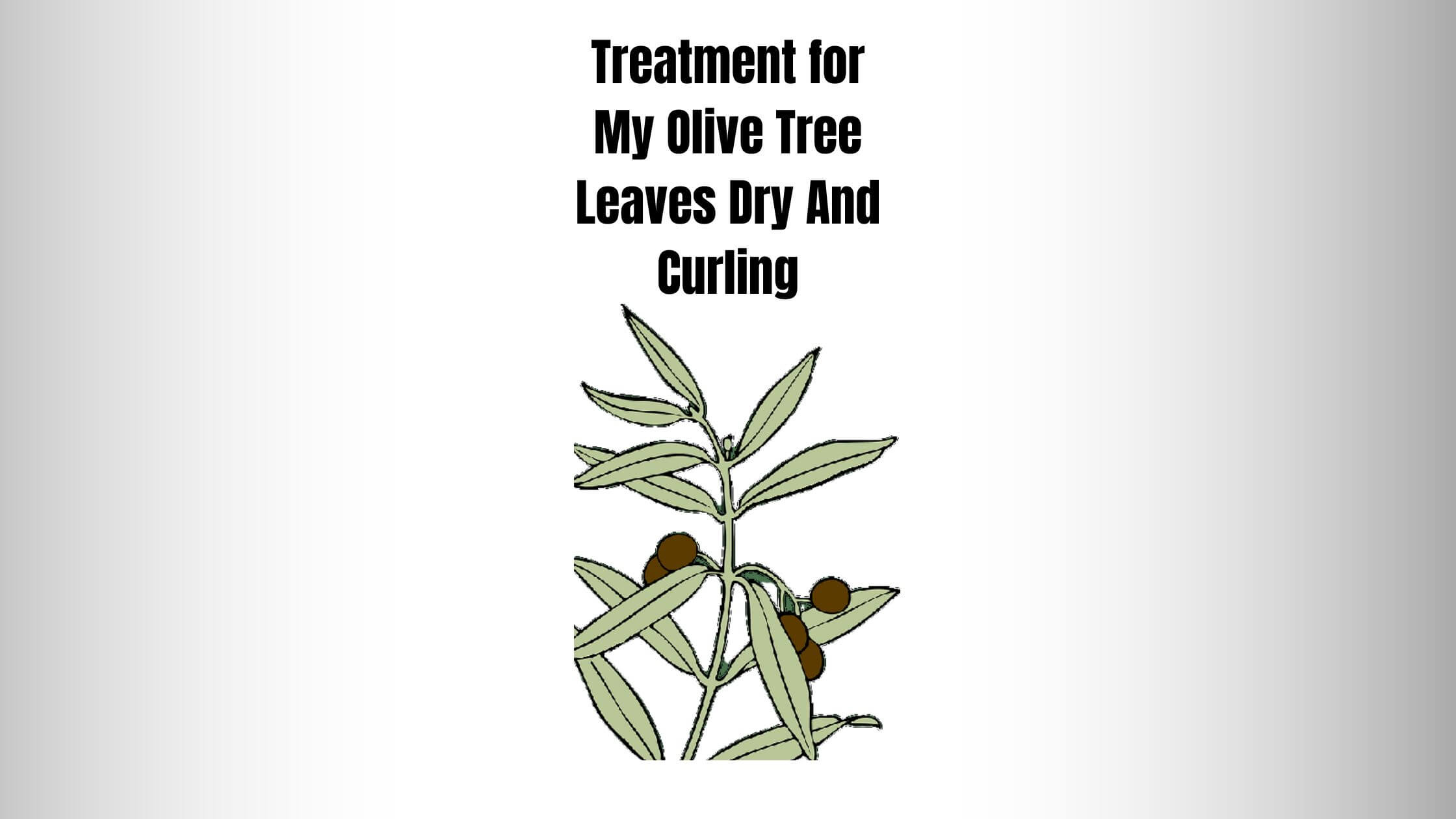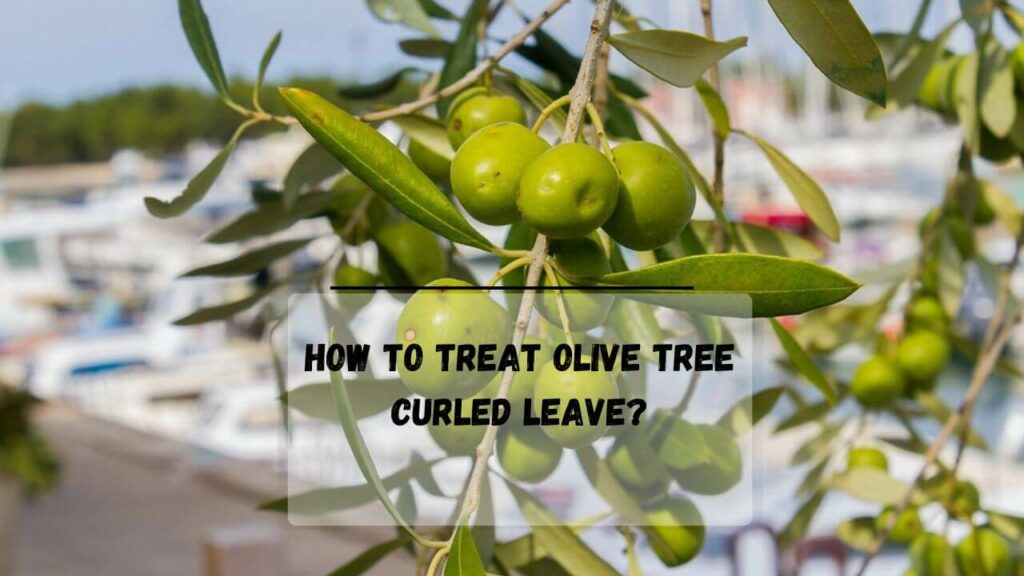
Don’t be so if you are worried about your olive tree leaves being dry and curly. In this article, we will thoroughly examine the answer to the most frequently asked question: why is my olive tree leaves dry and curling?
Furthermore, we will also discuss how to treat olive tree curled leaves and the reasons for indoor olive tree leaves curling and falling out of a particular area without any apparent reason.
After reading this article, you can follow up with a systematic and proper approach to treating olive tree leaves dry and curling. Let’s first find out 13 Reasons Why My Olive Tree Leaves Drying And Curling.
13 Reasons Why My Olive Tree Leaves Dry And Curling
Lack of water
If your olive tree is not getting sufficient water to thrive, the leaves are likely to be curled or dry. If this is the case, you should check whether the soil is of good quality and retains enough moisture. The symptoms of lack of water in olive trees are wilted leaves, browning leaf edges, dry leaves, and curled leaves.
High Temperatures
If you lived in a scorching region and planted your olive tree in direct sunlight, the high temperature will cause its leaves to dry out and curve very often.
Since trees always try to conserve water as much as possible in high temperatures, it is common to notice their leaves curling in direct sunlight. The most common signs of high temperature are curled leaves, dry leaves, and Browning leaves.
Disease
Your tee has enough water and optimal temperature to thrive but suffering from an underlying disease that needs to be treated. Certain conditions can cause an olive tree leaf to curl like verticillium wilt.
Diseases like olive knots are generally caused by a bacterium that directly infests the branches and the bark of olive trees. On the other hand, verticillium wilt is usually caused due to a soil-borne fungus. If you notice any sign of verticillium wilt in the olive trees’ bark, branches, or twig, get it checked by a professional arboriculturalist.
Pest Infestation
Many scale insects, spider mites, and fruit flies infest the olive tree leaves and cause them to dry out and curl. Do note that only fruit fly larvae feed into the fruit and cause a decline in yield while hampering the tree.
On the other hand, spiders and scale insects will directly suck the SAP from your olive tree branches at its leaves. If this is the case, you need to get the pet control or contact a professional.
Fungal Infections
If you notice any kind of fungal infection like olive leaf spot, this might be the reason why the leaves are drying out and curling a lot. Olive leaf spot is generally cost due to a fungus known as Spilocaea oleaginous, which exhibits symptoms like yellow or brown spots on the olive tree leaves and other subspecies.
Nutrient Deficiency
You may not be paying attention to your tree care. The lack of certain nutrients in the olive tree can cause its leaves to dry, curl, and change color. Besides this, an olive tree also suffers from stunted growth if there is any nutrient deficiency.
Over Pruning
Make sure you are not over-pruning the foliage of your olive tree that might cause its leaves to dry or curl. Pruning will cause the tree to struggle a lot.
Excessive fertilisation
You may have used an incorrect type of fertilization or excessive fertilization that has encouraged the tree growth and leaves quality. Over-fertilization will result in an olive tree proliferating while curling and drying. The most common sign of excessive fertilization tends to be an excess of new growth.
Improper Irrigation
The leaves will dry out quickly if you are not rinsing your olive trees properly. Improper irrigation like watering too often or too less may cause its leaves to not only become dry and curl but also will die.
High Winds
High winds usually cause the tree leaves to curl. Your olive tree may be experiencing high wind flow that is drying out its leaves and causing them to bend. The most common sign of high winds tends to be broken branches.
Drought
Not a surprise, drought will also make the olive tree struggle a lot and thrive. They will need more opportunities to promote its growth. It is important to keep watering your plant during drought or summer to avoid improper irrigation and dehydration.
Improper Drainage
The tree may not have been planted with a sound drainage system, causing it to struggle a lot and leading its leaves to dry out while curling and wilting.
Soil pH Imbalance
If the soil pH level is not balanced correctly, the leaves will likely dry out quickly. If the olive tree leaves are curling rapidly, look out for signs of yellow spots on them. If there is, the soil pH level is likely to be imbalanced. In this case, you can always use organic fertilizers like salt and lime. There are other alternatives as well.
How To Treat Olive Tree Curled Leave?

If The olive tree curled leaf is caused due to a lack of water or improper irrigation, make sure to treat it. It is essential to water your tree regularly and sincerely, especially in high temperatures.
Other than this, be sure to keep the olive tree in an area protected from direct sun and wind. As said earlier, direct sunlight, high temperature, and high winds can cause olive tree leaves to curl and dry rapidly.
According to a good rule of thumb, it is recommended to water your tree about an inch per week. Other than this, make sure to check for signs of olive not best infections best infestations, and fungal infections. Using the correct type of fungi and pesticides is essential to prevent best and fungal infestation.
Other than this, if branches are infected, prune them. Make sure to check for symptoms and take preventive measures like regular sanitation, watering, and pruning. Besides that, over-pruning may also affect the tree leaves quality and growth.
It is essential to avoid over-pruning and to remove too much. Add to this, and ensure you do not give excessive fertilization to your olive tree. It is necessary to always offer the required amount of fertilizer according to the manufacturer’s instructions.
You should never over-fertilize any tree. In addition, it is essential to pay attention to soil drainage and pH balance. If there is improper drainage make sure to improve it. It is necessary to plant your olive tree in an area that has well-draining soil and the proper pH level range. It is always right to regularly test the soil pH level and adjust it as required.
5 Reasons Why My Indoor Olive Tree Leaves Curling And Falling Off?
Lack of humidity
Since indoor olive trees are native to the Mediterranean region and need a settled humidity level to grow and thrive properly, if the air circulation is very dry, their leaves will curl and dry.
It may eventually fall off if not treated properly. It is essential to prevent this by keeping the tree in the proper humidity level indoors. Make sure you are placing a good quality humidifier nearby and regularly misting the leaves with water to avoid a lack of humidity level and air circulation around the tree’s environment.
Overwatering
You may be overwatering your olive tree, which is affecting its root. Over-watering an olive tree will cause it to dry out very quickly. If there is any sign of mushy texture to the soil or sudden leaves drop, you need to reduce the watering frequency.
Also, ensure the indoor olive tree is getting the proper soil pH level and drainage. If you don’t pay close attention to the soil moisture and the water the olive tree needs, it will not yield the expected result.
Insufficient Light
As indoor olive trees don’t get a lot of light to thrive, it is essential to ensure they get direct sunlight for at least a few hours a day. It is necessary to check for signs like yellow leaves, leaves drop, or pale leaves, which means they are not getting enough light. It is required to place your olive tree in an area that receives bright but indirect sunlight for most of the daytime.
Pest Infestation
As told earlier, pest Infestation is common in outdoor trees and indoor olive trees. If you notice any discoloration sign on the leaves, there might be spider mites or scale insects feeding on the tree.
Make sure to use the right combination of cultural mechanical and chemical control to manage pests, fungi, and diseases. It is always advised to use the recommended pesticides designed for the problem.
Nutrient deficiency
Due to a lack of nutrients like iron or magnesium, indoor olive tree leaves will curve and fall off. If your indoor olive tree leaves continuously fall with stunted growth, there might be an improper balance of nutrients or a need for fertilization.
Make sure you use the right balanced fertilizer that contains all the nutrients your indoor early tree needs. Also, check the soil for any nutrient deficiency or pH level imbalances to adjust it accordingly as required.
FAQ
Why Is My Olive Tree Leaves Brown And Curling?
If your olive tree leaves are brown and curling, this might have been caused due to a drought or pest infestations. Sometimes the olive tree leaves also turn brown due to certain diseases like olive knot and verticillium wilt. In addition, the high-temperature rise will also cause The olive tree leaves to dry out ground and curd rapidly.
How Often Should You Water An Olive Tree?
Depending upon the olive tree’s age, size, and growing condition, you should water it. According to a rule of thumb, you should water an olive tree about an inch a week. It can be done through irrigation or letting the rainfall do it for you. Other than this, be sure to check if there is anything causing root rots or improper soil drainage. It is essential to keep the olive trees’ soil moist.
How Do I Stop My Leaves From Curling?
As said earlier, you just identified the cause of the problem to address it to remedy the issue at hand. Firstly, ensure the tree is getting the proper amount of water and not suffering from pest fungal or disease infestation. Sometimes improper amounts of light or temperature range cause the tree leaves to curl. If this is the case, provide your tree with the right amount of light. Fertilize the tree and check its soil pH level periodically to stop the leaves from curly.
Conclusion
By now you have all the ideas and reasons for your query, ‘why are my olive tree leaves dry and curling’. If you find this article helpful, then share it. First, identify the specific cause and then take the appropriate action to solve the issue.
If you can still not diagnose the problem, call a professional arborist or horticulturist who is an expert at handling this kind of issue. Arborist consultation will help determine the best course of action to treat the problem.
If you like this article and find it helpful, consider sharing it. Your one share will help many people learn the question: why are my olive tree leaves drying and curling? Do check our other helpful guide on tree care and arboriculture. See you in the next post. Till then, take care and goodbye.
